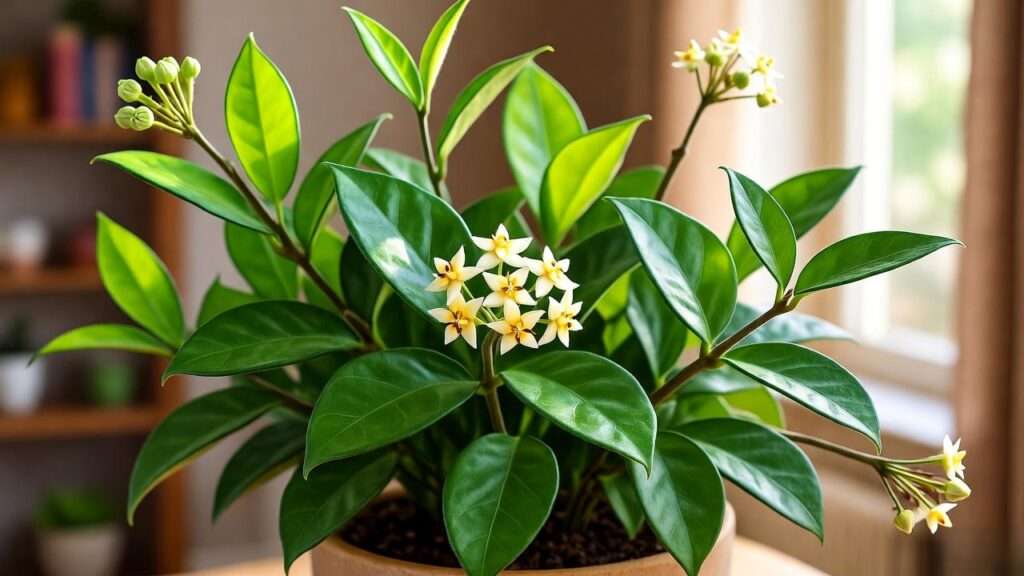Imagine transforming a corner of your home with a lush, cascading Hoya Chelsea plant, its heart-shaped leaves glistening under soft light! If you’re dreaming of vibrant foliage and fragrant blooms, you’re in the right place. The Hoya Chelsea plant, a charming hybrid of Hoya carnosa, is a low-maintenance gem that’s perfect for both novice and seasoned plant parents. Yet, common issues like yellowing leaves or stubborn blooms can frustrate even the greenest thumbs. This comprehensive guide unlocks expert-backed tips to ensure your Hoya Chelsea thrives, covering light, watering, soil, propagation, and more. Let’s dive in and cultivate a stunning indoor oasis! 🌸
1. Understanding the Hoya Chelsea Plant 🌸
1.1 What Is a Hoya Chelsea Plant?
The Hoya Chelsea plant, a cultivar of Hoya carnosa, is celebrated for its compact growth and distinctive, heart-shaped leaves. These waxy, glossy leaves give it a unique, puckered appearance, making it a standout in any plant collection. Native to Southeast Asia, this evergreen perennial belongs to the Apocynaceae family and is often called a “wax plant” due to its thick, succulent-like foliage. Its vines can trail or climb, offering versatility for indoor displays. With proper care, it may produce clusters of star-shaped, fragrant flowers, adding to its allure.
“The Hoya Chelsea’s compact form and lush foliage make it a favorite for small spaces,” says Dr. Emily Harper, a horticulturist with over 15 years of experience in tropical plants. Its adaptability and charm make it a must-have for plant enthusiasts.
1.2 Benefits of Growing Hoya Chelsea
Why choose a Hoya Chelsea? Beyond its aesthetic appeal, this plant offers multiple benefits:
- Decorative Versatility: Its trailing vines suit hanging baskets or shelves, enhancing any room’s ambiance.
- Low Maintenance: Perfect for busy lifestyles, it requires minimal fuss compared to fussier houseplants.
- Air Purification: Like many Hoyas, it helps improve indoor air quality.
- Bloom Potential: With the right conditions, it rewards you with sweet-scented, pinkish-white flowers.
Pro Tip: Pair your Hoya Chelsea with other Hoyas, like Hoya Kerrii, for a vibrant indoor jungle display! 🌿
2. Optimal Growing Conditions for Hoya Chelsea 🌞
2.1 Light Requirements
Light is the cornerstone of a thriving Hoya Chelsea. This plant craves bright, indirect light for 6–8 hours daily to fuel photosynthesis and encourage lush growth. Place it near an east-facing window for gentle morning sun or a north-facing window for consistent, filtered light. Too little light leads to leggy, sparse growth, while direct sunlight can scorch its delicate leaves, causing brown spots.
Practical Solutions:
- Use sheer curtains to diffuse harsh sunlight.
- Rotate the plant every few weeks to ensure even light exposure.
- If natural light is limited, supplement with a grow light (6500K, full-spectrum).
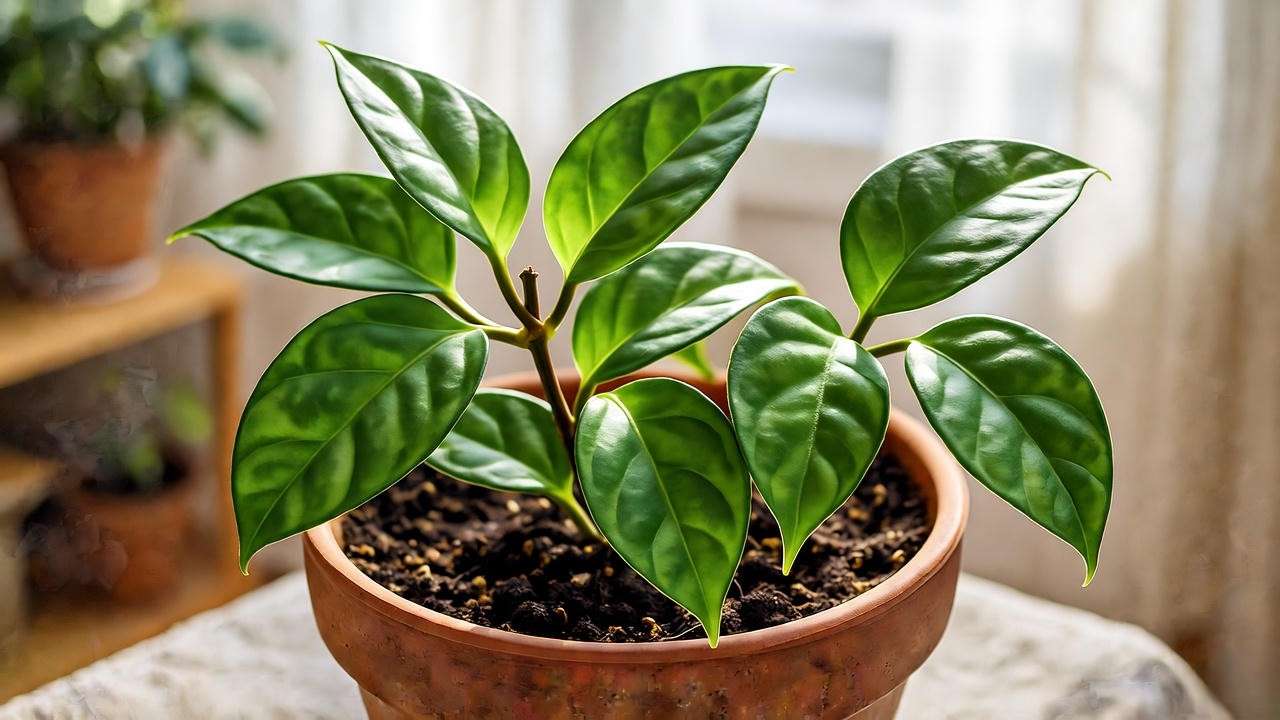
Pro Tip: If your Hoya Chelsea’s leaves lose their vibrancy, try moving it closer to a light source to boost growth! 💡
2.2 Temperature and Humidity
Hoya Chelsea thrives in temperatures between 60–80°F (15–27°C), mimicking its tropical origins. Avoid placing it near cold drafts, air conditioners, or heating vents, as sudden temperature swings can stress the plant. Humidity is equally critical, with an ideal range of 40–60%. In dry climates or during winter, low humidity can cause leaf curling or slow growth.
Humidity Boosters:
- Place a pebble tray filled with water beneath the pot.
- Group with other plants to create a humid microclimate.
- Use a room humidifier for consistent moisture levels.
Warning: Keep your Hoya Chelsea away from temperatures below 50°F (10°C) to prevent leaf drop. ❄️
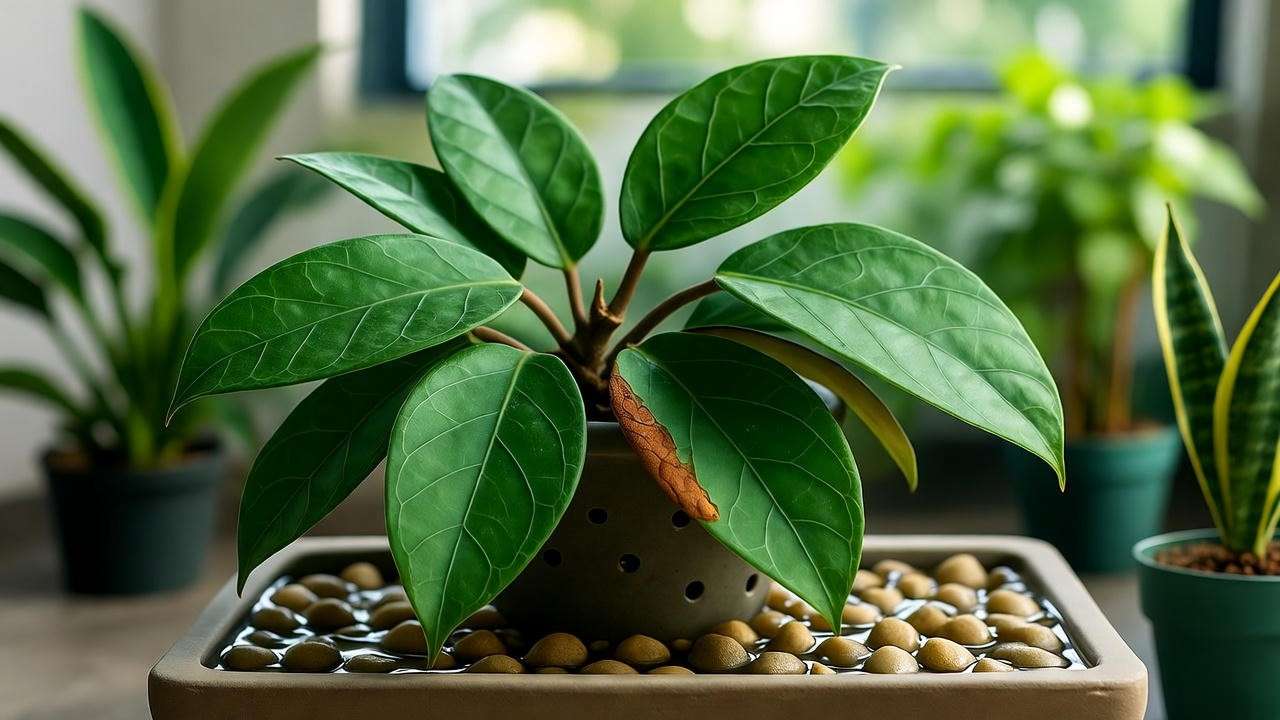
2.3 Soil and Potting Needs
A well-draining soil mix is non-negotiable for Hoya Chelsea to prevent root rot. Combine 1 part potting soil, 1 part perlite, and 1 part orchid bark for optimal aeration and drainage. Alternatively, use a pre-made cactus or succulent mix with added perlite. Choose a pot with drainage holes—terracotta is ideal for wicking away excess moisture. Repot every 1–2 years or when the plant becomes root-bound, typically indicated by roots circling the pot’s base.
DIY Soil Mix Recipe:
- 33% high-quality potting soil
- 33% perlite for aeration
- 33% orchid bark or coco coir for drainage
- Optional: A handful of activated charcoal to keep the mix fresh
Example: When repotting, gently tease apart roots and refresh the soil to encourage healthy growth. 🪴
3. Watering and Feeding Your Hoya Chelsea 💧
3.1 Watering Best Practices
Watering a Hoya Chelsea requires balance—too much or too little can harm your plant. Allow the top 1–2 inches of soil to dry out between waterings, typically every 1–2 weeks, depending on your home’s conditions. Use your finger or a moisture meter to check soil dryness. Overwatering leads to yellowing leaves or mushy stems, while underwatering causes wrinkled, droopy foliage.
Watering Tips:
- Use room-temperature water to avoid shocking the roots.
- Water less frequently in winter when growth slows.
- Ensure excess water drains completely to prevent soggy soil.
Expert Tip: If you’re unsure, err on the side of underwatering—Hoyas are more forgiving of dryness than overwatering! 💦
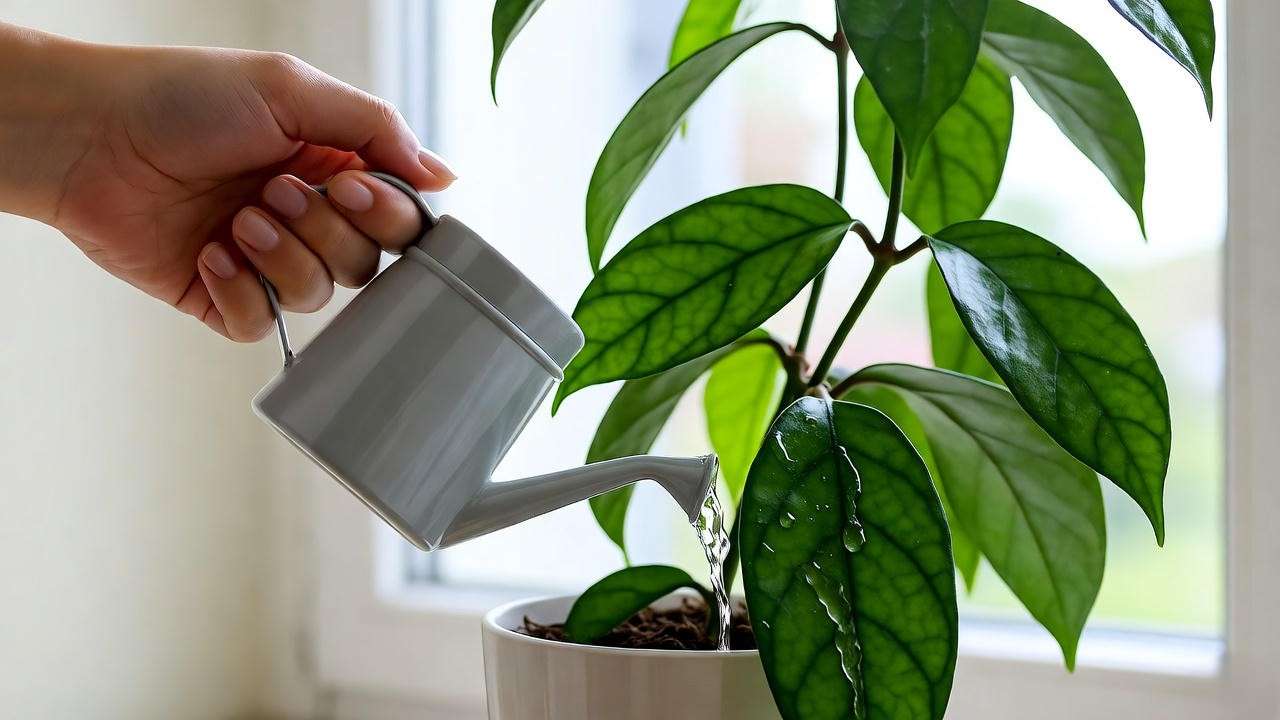
3.2 Fertilizing for Growth
To keep your Hoya Chelsea vibrant, fertilize monthly during the growing season (spring and summer) with a balanced, water-soluble fertilizer (e.g., 10-10-10) diluted to half strength. Avoid feeding in fall and winter when the plant is dormant. Over-fertilizing can cause leaf burn or salt buildup in the soil, so always follow the “less is more” rule.
Fertilizing Schedule:
- Spring/Summer: Feed every 4 weeks.
- Fall/Winter: Pause fertilizing to let the plant rest.
Case Study: Sarah, a plant enthusiast, noticed her Hoya Chelsea lacked blooms until she started a consistent fertilizing routine. Within three months, her plant produced its first flower cluster! 🌺
Warning: Rinse the soil occasionally to flush out excess fertilizer salts. 🚿
4. Pruning and Maintenance ✂️
4.1 Pruning for Shape and Health
Pruning keeps your Hoya Chelsea bushy and healthy. Use sterilized shears to trim leggy vines or remove yellowed leaves, cutting just above a node (where leaves meet the stem). Regular pruning encourages fuller growth and maintains an attractive shape. Avoid cutting flower spurs—small, woody stubs where blooms form—as these are essential for future flowers.
Pruning Steps:
- Sterilize shears with rubbing alcohol.
- Identify leggy or damaged growth.
- Cut above a node at a 45-degree angle.
- Dispose of cuttings or use for propagation.
Caution: Over-pruning can stress the plant, so trim sparingly. ✂️
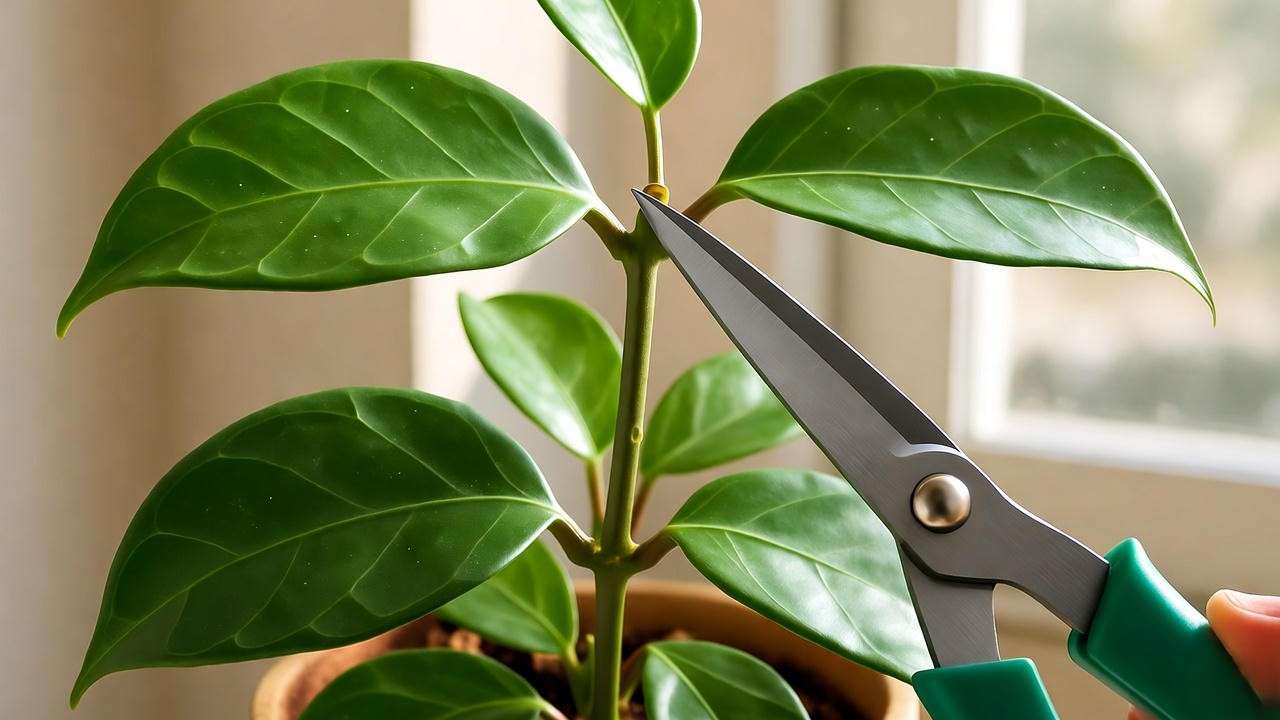
4.2 Cleaning Leaves
Dust on leaves blocks sunlight, hindering photosynthesis. Gently wipe your Hoya Chelsea’s leaves with a damp, soft cloth every few weeks to keep them glossy and efficient. Avoid harsh chemicals or leaf shine products, which can clog pores.
Tip: Cleaning not only boosts plant health but also enhances its shiny, decorative appeal! ✨
5. Propagating Hoya Chelsea: Grow More Plants! 🌱
5.1 Propagation Methods
Propagating your Hoya Chelsea is a rewarding way to expand your collection or share with friends. The most effective method is stem cuttings, which can be rooted in water or soil.
Step-by-Step Water Propagation:
- Select a healthy stem with 2–3 nodes and a few leaves.
- Cut below a node using clean scissors.
- Place the cutting in a jar of filtered water, ensuring nodes are submerged.
- Change water every 3–5 days and keep in bright, indirect light.
- Roots should appear in 2–4 weeks; transplant to soil once roots are 1–2 inches long.
Soil Propagation Alternative:
- Dip the cut end in rooting hormone (optional) and plant in a moist, well-draining mix.
- Cover with a plastic bag to retain humidity and place in indirect light.
- Check for roots after 3–4 weeks by gently tugging on the cutting.
Example: A clear glass jar makes water propagation visually exciting, letting you watch roots grow! 🥰
5.2 Common Propagation Mistakes
Avoid these pitfalls for successful propagation:
- Overwatering: Keep soil moist, not soggy, to prevent rot.
- Unhealthy Cuttings: Choose vibrant, pest-free stems.
- Low Light: Insufficient light slows root development.
Success Story: Reader Mia propagated her Hoya Chelsea and gifted rooted cuttings to her book club, spreading plant love! 🌿
6. Troubleshooting Common Hoya Chelsea Problems 🛠️
6.1 Yellowing or Dropping Leaves
Yellowing or dropping leaves are common Hoya Chelsea issues, often signaling care missteps. The primary culprits include:
- Overwatering: Excess moisture causes root rot, leading to yellow, mushy leaves. Ensure the top 1–2 inches of soil dry out before watering again.
- Poor Drainage: Soggy soil suffocates roots. Use a well-draining mix and a pot with drainage holes.
- Low Light: Insufficient light weakens the plant, causing leaves to yellow or drop. Relocate to a brighter spot with indirect sunlight.
Solutions:
- Adjust watering to match the plant’s needs and season.
- Check the pot’s drainage and repot if necessary.
- Move to a location with 6–8 hours of bright, indirect light daily.
Pro Tip: If leaves yellow despite proper care, test your water quality—high mineral content can stress plants. Use filtered water for best results. 💧
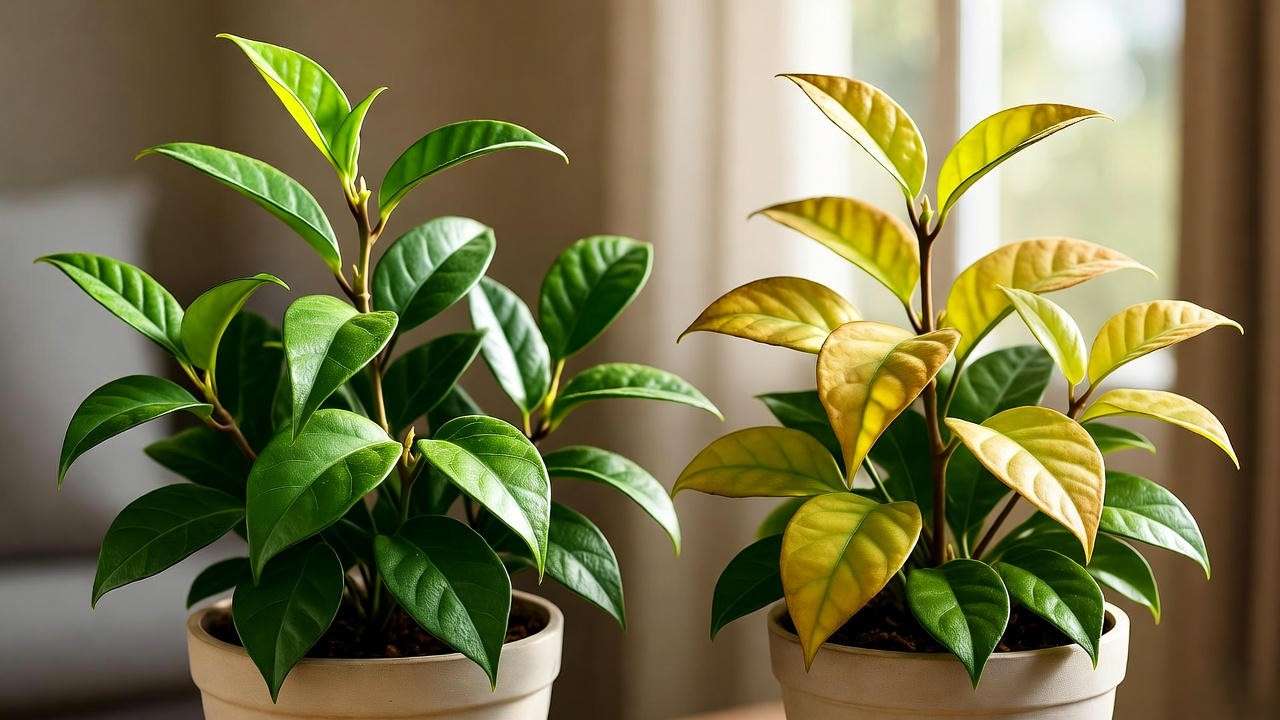
6.2 No Blooms? Here’s Why
Hoya Chelsea’s star-shaped, fragrant flowers are a highlight, but lack of blooms frustrates many growers. Common reasons include:
- Insufficient Light: Blooms require bright, indirect light. Without it, the plant focuses on leaf growth.
- Immature Plant: Young Hoyas may take 2–3 years to mature enough for flowering.
- Nutrient Deficiency: Lack of phosphorus can hinder bloom production.
How to Encourage Blooms:
- Increase light exposure by placing near an east- or west-facing window.
- Use a fertilizer higher in phosphorus (e.g., 5-10-5) during spring.
- Be patient—mature plants bloom more reliably.
“Hoya Chelsea blooms are worth the wait,” says botanist Dr. Laura Chen. “Consistent light and a slight root-bound state often trigger flowering.” 🌸
6.3 Pests and Diseases
Hoya Chelsea is relatively pest-resistant but can attract mealybugs, spider mites, and aphids. These pests sap the plant’s vitality, causing stunted growth or sticky residue.
Pest Identification and Control:
- Mealybugs: White, cottony masses on stems or leaf undersides. Treat with neem oil or a cotton swab dipped in rubbing alcohol.
- Spider Mites: Tiny webs and speckled leaves. Increase humidity and spray with insecticidal soap.
- Aphids: Small, green insects clustering on new growth. Rinse with water or apply neem oil.
Prevention Tips:
- Inspect leaves regularly, especially undersides, for early detection.
- Maintain good air circulation to deter pests.
- Quarantine new plants to prevent pest spread.
Expert Insight: Regular cleaning and proper humidity reduce pest risks significantly. 🐞
7. Styling and Displaying Your Hoya Chelsea 🏡
7.1 Creative Display Ideas
Hoya Chelsea’s cascading vines make it a versatile decor piece. Here are creative ways to showcase it:
- Hanging Baskets: Let vines trail freely for a boho-chic vibe.
- Trellises or Moss Poles: Train vines upward for a structured look.
- Shelves: Place in decorative pots on high shelves for a waterfall effect.
- Macramé Hangers: Pair with artisanal hangers for a trendy aesthetic.
Inspiration: Try a ceramic pot with neutral tones to highlight the plant’s glossy leaves, or go bold with a colorful planter for contrast. 📸
7.2 Companion Plants
Grouping Hoya Chelsea with other plants enhances humidity and aesthetics. Ideal companions include:
- Pothos: Shares similar light and water needs, adding lush greenery.
- Peperomia: Compact and low-maintenance, perfect for small spaces.
- Other Hoyas: Hoya Kerrii or Hoya Pubicalyx create a cohesive collection.
Benefits of Grouping:
- Boosts local humidity, mimicking tropical conditions.
- Creates a visually appealing indoor jungle.
- Encourages cross-pollination of care habits.
Tip: Arrange plants at varying heights for a dynamic display that draws the eye! 🌿
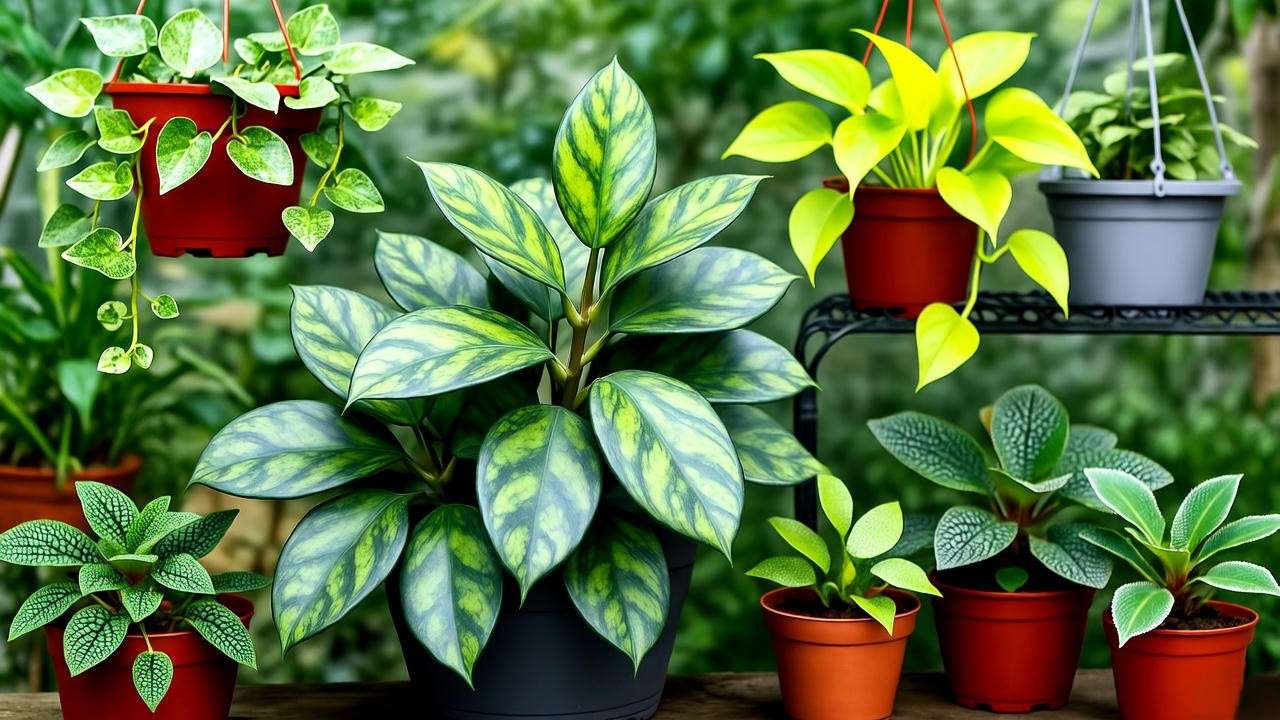
8. FAQs About Hoya Chelsea Care ❓
Q1: How often should I water my Hoya Chelsea?
A: Water when the top 1–2 inches of soil feel dry, typically every 1–2 weeks. Adjust based on light, humidity, and season. Overwatering is a common mistake, so check soil moisture with a finger or meter.
Q2: Why isn’t my Hoya Chelsea blooming?
A: Lack of blooms often stems from insufficient light, an immature plant, or nutrient deficiencies. Ensure 6–8 hours of bright, indirect light and fertilize with a phosphorus-rich formula during spring.
Q3: Can Hoya Chelsea grow in low light?
A: While it can survive in low light, growth will be slow, and blooms are unlikely. For best results, provide bright, indirect light to keep it vibrant.
Q4: Is Hoya Chelsea pet-safe?
A: Yes, Hoya Chelsea is non-toxic to cats and dogs, making it a safe choice for pet-friendly homes. However, discourage pets from chewing leaves to avoid minor digestive upset.
9. Conclusion: Your Path to a Thriving Hoya Chelsea 🌟
Caring for a Hoya Chelsea plant is a rewarding journey that blends patience with creativity. By providing bright, indirect light, well-draining soil, balanced watering, and occasional fertilizing, you’ll unlock its full potential—lush foliage and, with time, fragrant blooms. Whether you’re propagating cuttings or styling vines in a chic hanging basket, this plant offers endless possibilities for plant lovers. Experiment with the tips in this guide, and don’t be afraid to make mistakes—each leaf teaches you something new!
Call to Action: Share your Hoya Chelsea journey in the comments or tag us on social media with #HoyaChelseaLove! How do your plants brighten your space? 🌱
Final Tip: Patience is the secret ingredient. With consistent care, your Hoya Chelsea will reward you with years of stunning growth and occasional floral surprises. ✨

